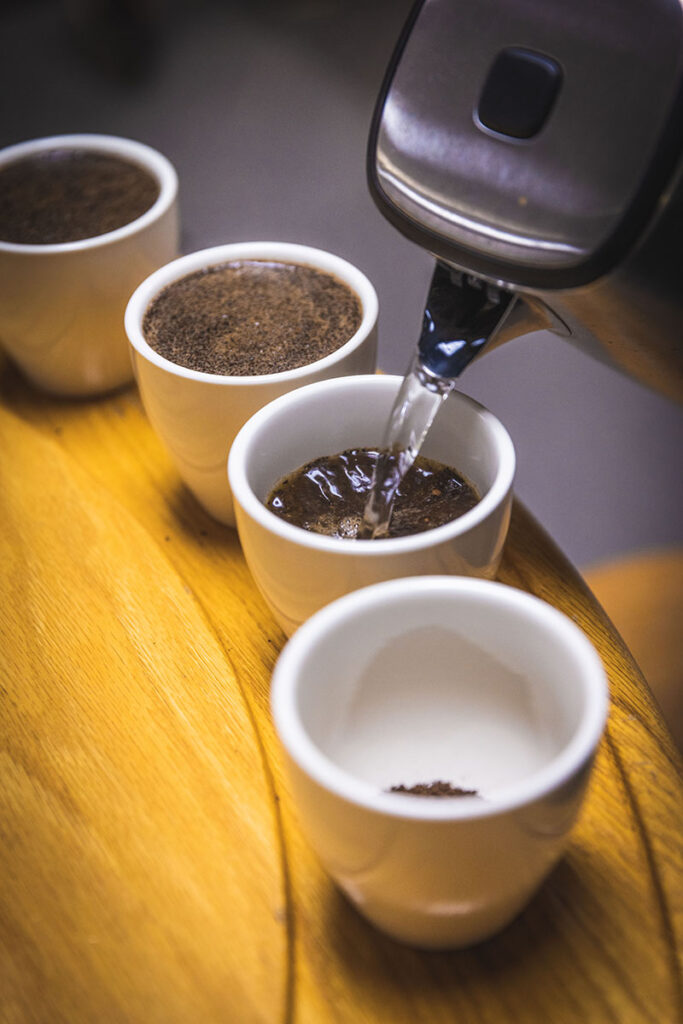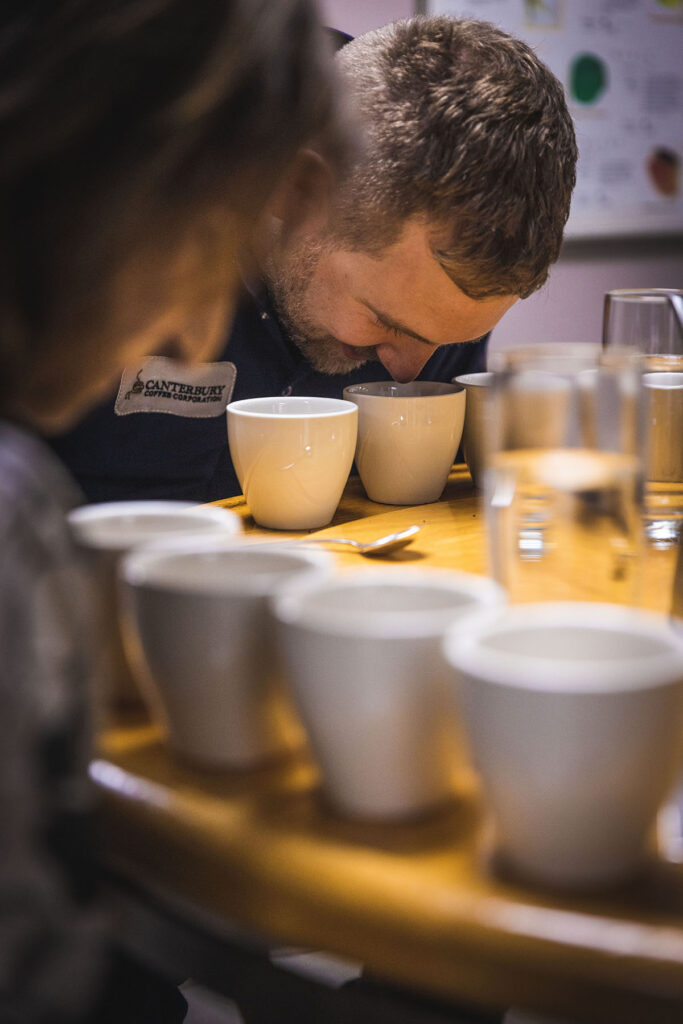Coffee cupping, also known as coffee tasting, is a method used to evaluate the quality and characteristics of coffee beans. It is a standard practice used in the coffee industry to determine the flavour, aroma, body, and acidity of a coffee.


The basic process of cupping involves brewing a small amount of ground coffee in a cup or bowl, typically using a ratio of about 8.25 grams of coffee to 150 milliliters of hot water. The coffee is then left to brew for a few minutes, after which it is smelled and tasted.
During the cupping process, the coffee is evaluated based on various criteria, such as aroma, flavour, acidity, body, and aftertaste. A standardized sensory lexicon is often used to describe the coffee, with terms such as fruity, floral, nutty, spicy, chocolatey, and smoky, to describe the aroma, acidity, sweetness, bitterness, body, and aftertaste.
Coffee cupping is typically done by trained coffee professionals, such as coffee tasters, roasters, and quality control staff. It is usually done in a formal setting, such as a cupping lab or a coffee roastery, and it is typically done in small groups. The coffee is evaluated using a standardized procedure, and the results are recorded and used to determine the quality of the coffee and to make decisions about purchasing or roasting it.
Do you have a term or definition you’d like us to add to the glossary? Let us know using this form.


